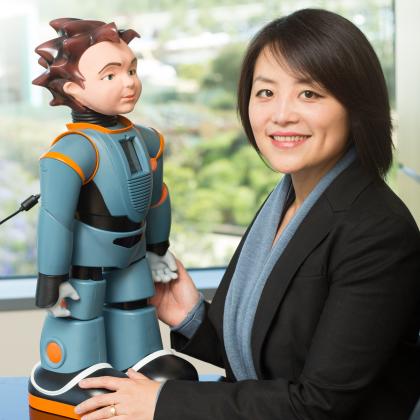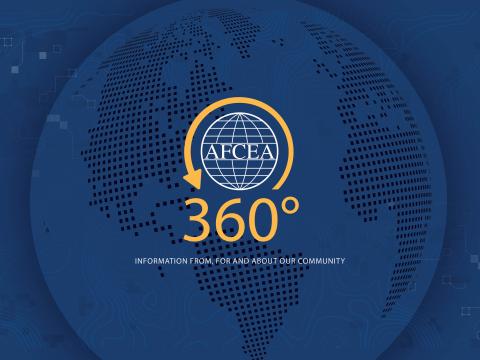Video Game Creators Put the TEAM in STEAM
Have you ever wondered how a video game is made and how many people help make it? Ning Wang, research associate professor of computer science at the University of Southern California Viterbi School of Engineering, has those answers.
Wang created ARIN-561, one of the first educational games to help high school students learn how artificial intelligence (AI) works. You can play it online for free!
ARIN-561 follows a scientist who crash-lands on a mysterious planet and must survive by solving problems using AI. The puzzles and activities in the video game show how search engines work.
How To Make a Video Game
Wang explained how she created the game. First, she and her team came up with the idea to make an AI learning video game and researched what level of math problems the game would need. Then, they brainstormed how to make learning fun for students.
Before they made characters in ARIN-561, Wang said they had two cylinders walking around the screen, and the next step was figuring out how to make the cylinders move from one place to another. After the mechanics of the game were figured out, they decided what the story would be and wrote the script for what the characters would say during the game. After that, the team began testing the game until it was perfect.
“I think video games are not only fun, but it's a huge job market,” Wang said.
It’s a Team Effort
Wang said making a video game needs a lot of teamwork. The programmers are responsible for creating game interactions. For example, she said, if a student clicks on something on the screen that makes another thing happen, that action needs to be programmed with code.
Another job that not everyone thinks about is engineering. Game engineers have to make sure that students can save their data so that the next time they play the game, they can move forward to the next level.
For educational games, learning scientists help decide if the activities in the game will do a good enough job of teaching. There’s also a need for engineers who will play video games to make sure that everything works.
Not super interested in math and engineering? Don’t worry! Artists and storytellers can also be a part of making video games.
Without technical artists, creative writers and music composers, video games wouldn’t be able to come to life, Wang said. Wang is now the director of her own lab, the Human-Centered AI Lab, which will focus on AI problem-solving and education research.

I think video games are not only fun, but it's a huge job market.
Learning From Gaming
Through her job, Wang has learned that educational video games are helpful for teaching students problem-solving skills and all sorts of things related to science, technology, engineering and math.
Wang said the hardest part of her job is coming up with ways to make video games educational but also really fun. But the best part is when students solve problems and enjoy doing it through the video game, she said.
For young students who are interested in making their own video games, Wang said they don’t always have to write their own code. Scratch is a free online program that allows kids to make their own games with basic coding steps. But for anyone who thinks a coding or video game job is in their future, Wang said her advice is to start learning one programming language, which will lead to understanding many different thinking skills.
Video Game Coding Is Unique
Wang asked her team what makes video game coding unique, and they gave a variety of answers. One of her students said that video game programming is more fun than software engineering because the results are more visual, and there is more creative freedom to code things in different ways and tell fun stories.
“The game coding community is a lot more relaxed and engaging,” one of Wang’s students expressed. “It is just fun to watch others and their projects, and also they will be happy to give you some advice on what you should do.”
Aside from educational video games for students, Wang has also worked on projects for the U.S. Department of Defense, like a game called “Tactical Language,” which helps members of the armed forces learn foreign languages and cultures before visiting different countries.
Wang is working on two more video games meant to teach high school students about probability and machine learning that should be released online in the spring. Students can play ARIN-561 at www.arin561.org/play.





Comments